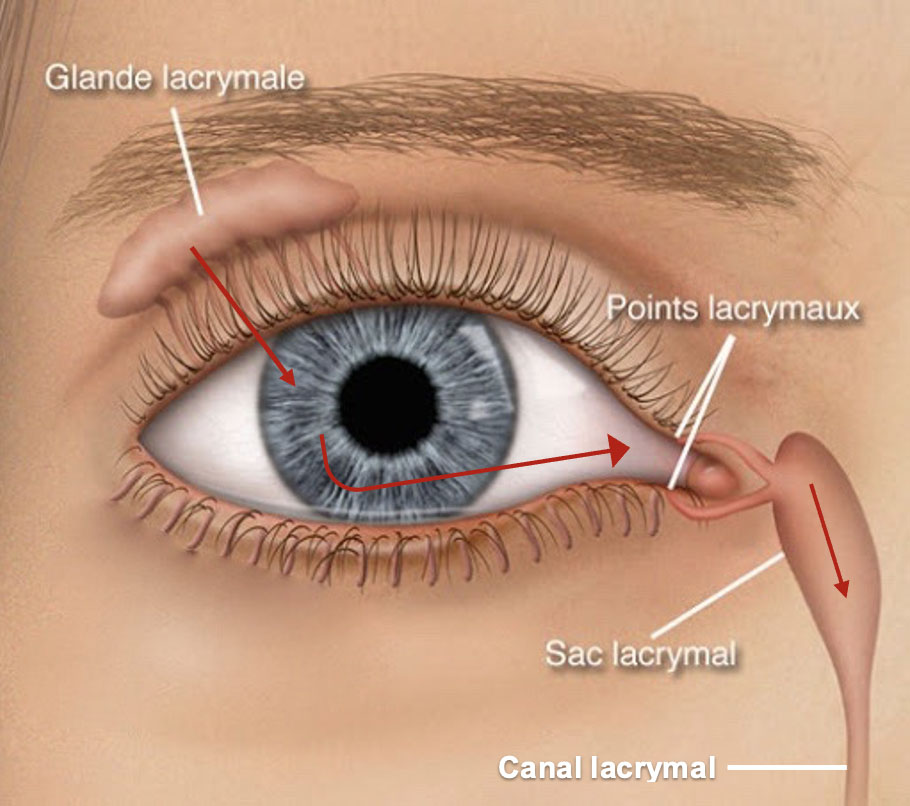Condition
Tear-duct disorders
In order to function correctly, your eyes are constantly moistened by tears. Tears are produced by the tear glands (water) and the eyelids (oils) and then drain into the nasal cavities (nose) through a series of canals (tear ducts). These ducts may become narrowed or blocked, preventing normal drainage of the tears.
Diagnosis
Any change in the circulation of tears may result in constantly watery eyes. The tears may be clear, which indicates that the blockage is located before the lacrimal sac, or they may be purulent if the blockage is located after the lacrimal sac.
Among children, 1 to 5% infants experience such blockages. Blockages are often present from birth, but may also appear after an infection.

Treatment
Children
For many infants, the blockage disappears on its own during the first two years of life. Treatment may nonetheless be necessary. The first treatment method used in children is probing, which may be carried out on children from 3 months of age. Most specialists prefer to wait several months, however, given the high rate of spontaneous resolution before 2 years of age. The operation starts with dilation of the punctum (the opening at the inner corner of the eye). The surgeon then inserts a very thin probe into the lachrymal drainage system. And finally a sterile fluid is injected in order to flush out the blockage.
In some cases, if this treatment is not effective, the surgeon may use a silicon wick (which is left in place for several weeks) in order to keep the duct open. In the rare cases where the initial treatment is unsuccessful, an operation to create a new duct is suggested once the child is older.
Adults
Treatment for adults involves surgically recreating the tear duct from the outset, without any prior steps. This is because, unlike in children, probes are rarely effective in adults and further operations are usually required.
In adults, the surgery is called Dacryocystorhinostomy (DCR). It involves creating a new duct towards the nasal cavities. The operation takes about 1 ½ hours. A complete cure is achieved in 85 to 95% of cases.
Our centre offers highly qualified specialists.
Urgence:
En cas d'urgence:
Pour toute question ou demande non urgente, nous vous invitons à nous contacter de préférence par email:
